AMD Ryzen 7 8700G and Ryzen 5 8600G Review: Zen 4 APUs with RDNA3 Graphics
by Gavin Bonshor on January 29, 2024 9:00 AM EST- Posted in
- CPUs
- AMD
- APUs
- Phoenix
- 4nm
- Zen 4
- RDNA3
- AM5
- Ryzen 8000G
- Ryzen 7 8700G
- Ryzen 5 8600G
CPU Benchmark Performance: Science And Simulation
Our Science section covers all the tests that typically resemble more scientific-based workloads and instruction sets. Simulation and Science have a lot of overlap in the benchmarking world. The benchmarks that fall under Science have a distinct use for the data they output – in our Simulation section, these act more like synthetics but, at some level, are still trying to simulate a given environment.
In the encrypt/decrypt scenario, how data is transferred and by what mechanism is pertinent to on-the-fly encryption of sensitive data - a process by which more modern devices are leaning to for software security.
Adding to our 2024 CPU suite, we've included the Montage Astronomical Image Mosaic Engine (MAIM) benchmark and OpenFOAM 1.2 and retained our gaming simulation benchmarks, including our Dwarf Fortress and Factorio benchmarks.
We are using DDR5-5200 memory as per the JEDEC specifications on the Ryzen 7 8700G and Ryzen 5 8600G, as well as DDR4-3200 on the Ryzen 7 5700G and Ryzen 5 5600G. The same methodology is also used for the AMD Ryzen 7000 series and Intel's 14th, 13th, and 12th Gen processors. Below are the settings we have used for each platform:
- DDR5-5200 CL44 - Ryzen 8000G
- DDR4-3200 CL22 - Ryzen 5000G
- DDR5-5600B CL46 - Intel 14th & 13th Gen
- DDR5-5200 CL44 - Ryzen 7000
- DDR5-4800 (B) CL40 - Intel 12th Gen

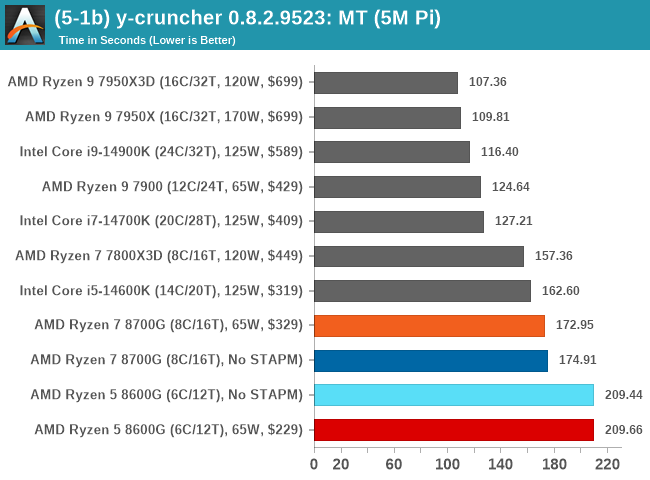
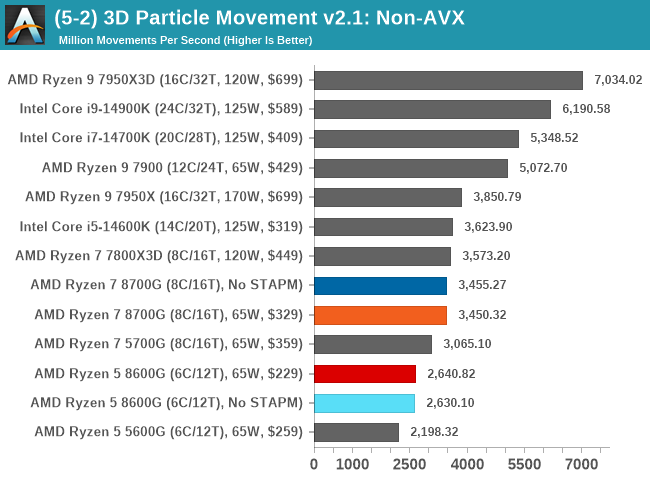


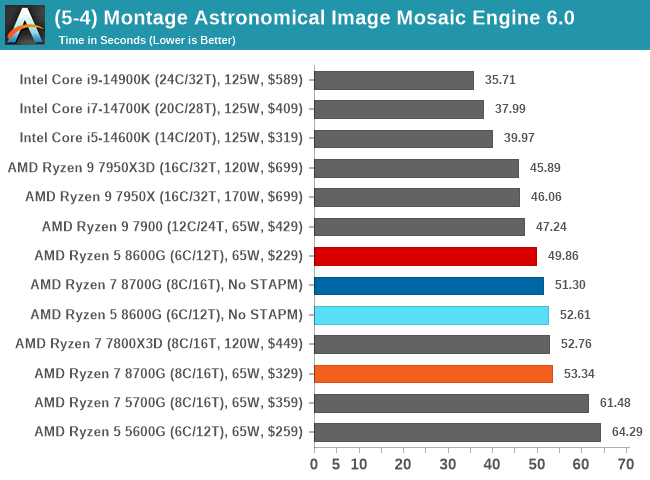
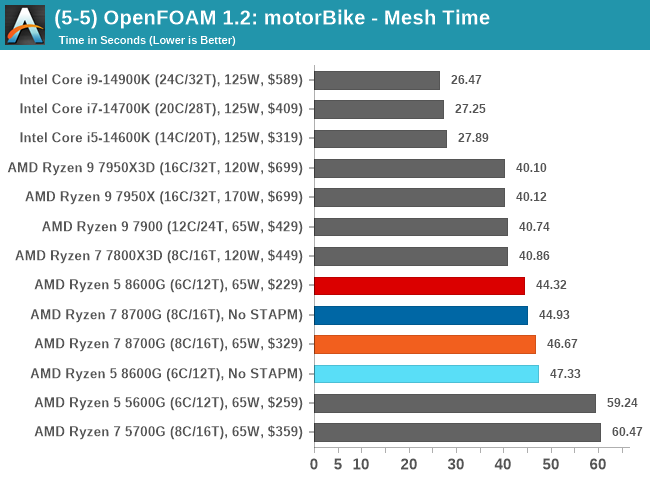
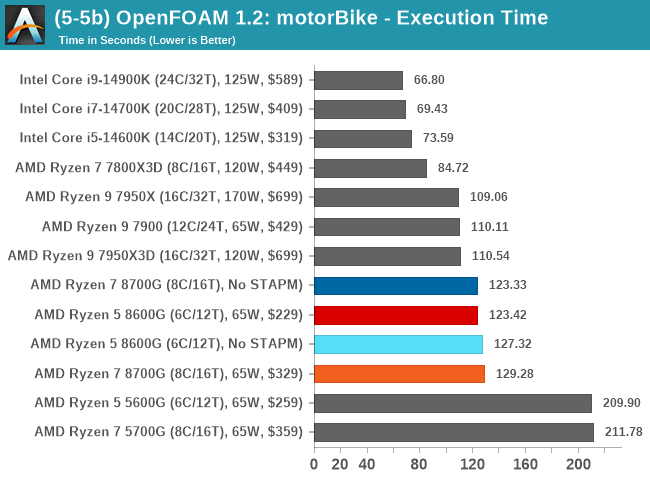

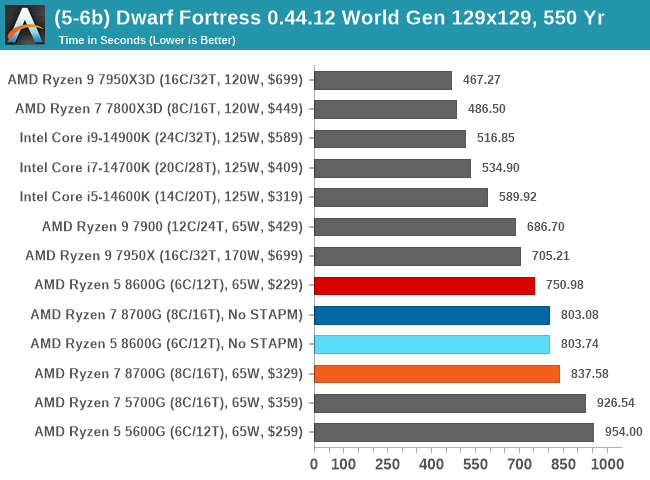
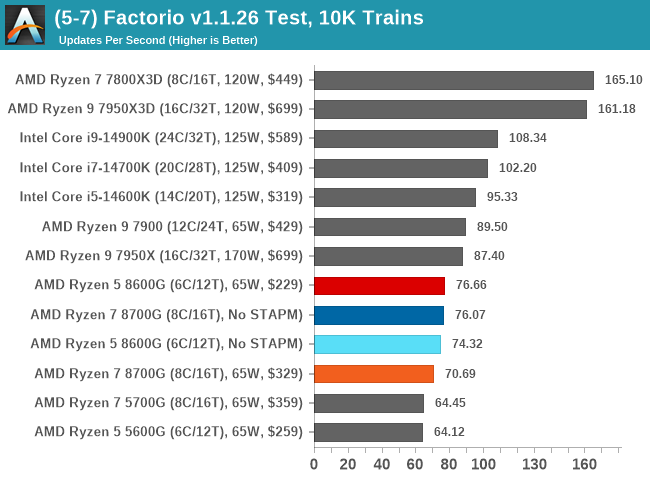
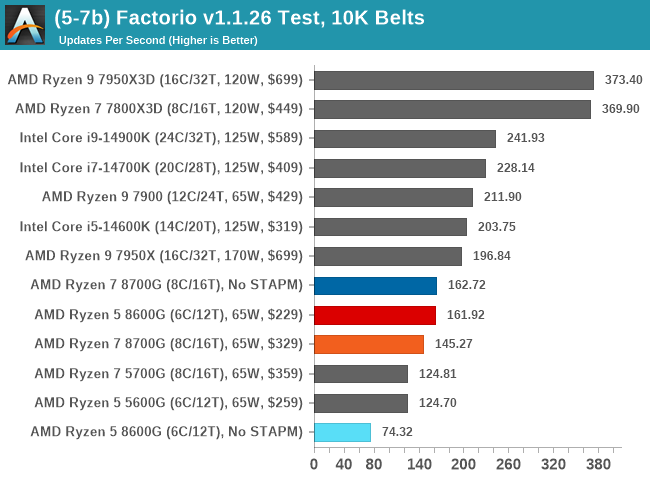
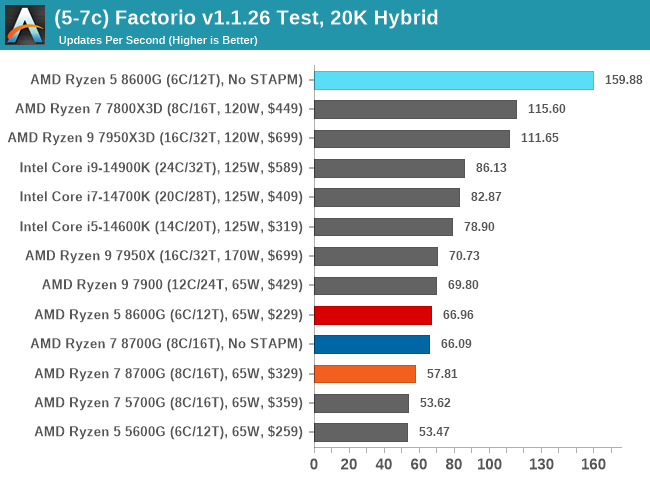
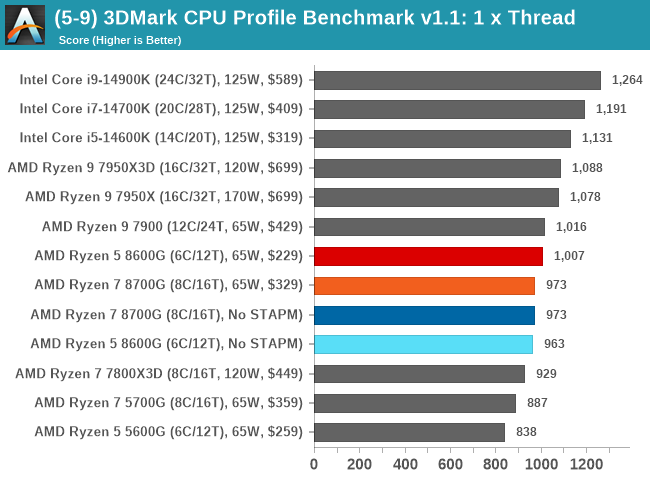
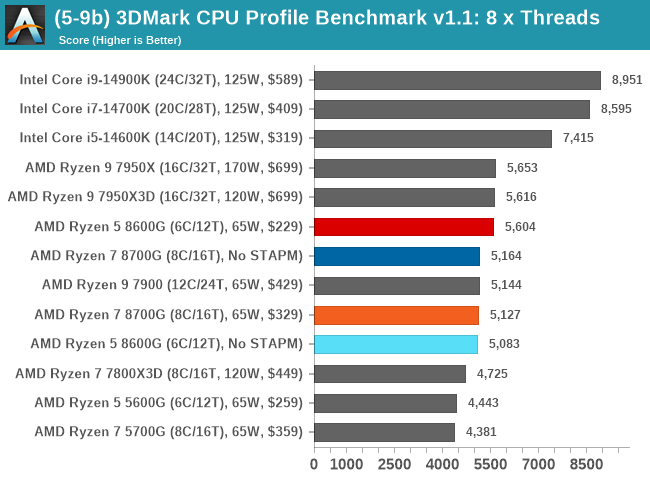
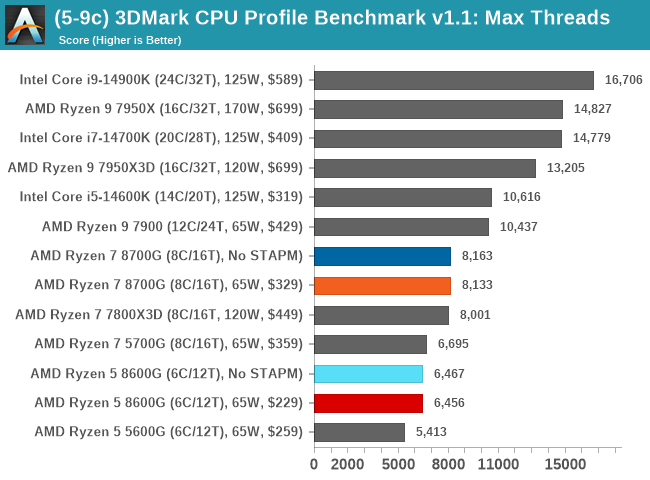
In our simulated and science-focused tests, much of the same happens here as we saw in encoding and rendering; bigger cores and more of them make the difference. We did see strong AVX performance, which is a given since Zen 4 supports AVX-512 workloads via two 256-bit channels. We also saw solid performance in y-Cruncher, with the Ryzen 5 8600G beating out the Ryzen 9 7900 in single-threaded performance. This shows that despite using more power-efficient Phoenix dies, Zen 4 on mobile still offers solid single-threaded performance when transitioned over to the desktop.
Testing without STAPM limitations in our Science and Simulation benchmarks and removing the sustained power management limits didn't really make much difference in performance in these tests.










111 Comments
View All Comments
ToTTenTranz - Monday, January 29, 2024 - link
It might be worth mentioning the 8700G's larger iGPU gains almost 25% performance when paired with DDR5-6000 instead of the slower DDR5-5200:https://www.techspot.com/review/2796-amd-ryzen-870...
I don't know what advantages there are for DIY clients to hold on to JEDEC-approved speeds instead of just going with XMP and EXPO "pre-validated 1-click overclocks". Especially considering how it's only called "overclock" because JEDEC seems to take their sweet time to validate new clock/timing setups.
Slash3 - Monday, January 29, 2024 - link
The gap is likely even larger than that, as I believe HWU's 5200MT entry is still using faster XMP/Expo timings, rather than CL44 base spec. Steve simply scaled the speed for the other entries (the exception being 7200MT, which is also at Gear 2).meacupla - Monday, January 29, 2024 - link
The DDR5 RAM has to run at 1.1V to get JEDEC validation. It's not that JEDEC takes their sweet time, it is about DRAM makers not being able to produce fast DRAM.This is especially true when you want low latency.
AFAIK, the fastest JEDEC compliant DDR5 available is 6400, but with awful latency.
More so, I am surprised techspot got their chip to work at DDR5-7200. I didn't think it was possible to hit more than 6000 with any stability on the AM5 platform.
Slash3 - Monday, January 29, 2024 - link
Recent AGESA updates have made Gear 2 speeds in the 7200-8000MT range quite possible, but improvement over Gear 1 6000MT operation is fairly small due to the I/O die fabric speed being a limiting factor.These APUs are monolithic, though, so higher FCLK and MCLK/UCLK speeds are likely possible. Hopefully some reviewers and users will have time to dig into it now that the chips are officially out. I suspect we'll see some people running 6600MT in Gear 1 or 8000MT+ in Gear 2.
nandnandnand - Tuesday, January 30, 2024 - link
These APUs are bandwidth starved when it comes to iGPU performance. This review is already an outlier for using DDR5-5200, although pairing more expensive memory with 8700G/8600G doesn't make it a better choice than a CPU+discrete combo for budget users.FWhitTrampoline - Tuesday, January 30, 2024 - link
The main reason that the FCLK can get to higher rates/better FCLK:MCLK/UCLK ratios and with the proper stability on the Ryzen 8000G series APUs is because the Memory Controllers are on the same monolithic slab of silicon as the CPU cores. So there's no Cross-Module(Die to Die)/cross-clock-domain SerDes hops required there on Monolothic APUs to slow things down there. So the path from the Infinity fabric to the Memory Controllers on any Monolithic APU die based design is simpler there for APUs.thestryker - Monday, January 29, 2024 - link
JEDEC did something odd with DDR5 in that there are multiple sets of compliant latency and every maker has gone with the middle set. The lowest set is identical to DDR3/4 JEDEC compliant memory with the middle being about 14% higher. Still worse than XMP/EXPO kits as those just throw voltage through to lower latency.I'm hoping that with the 8500 DRAM Micron mentioned in a press release means maybe there will be some lower latency parts I can get for my server box.
is4u2p - Wednesday, January 31, 2024 - link
The legion Go runs 7500 RAM with the Z1 Extreme.is4u2p - Wednesday, January 31, 2024 - link
Yep, they peak around DDR5-6400 speeds, which is why you're seeing all these handhelds with 6500 or higher.barich - Wednesday, January 31, 2024 - link
DIY clients, sure. But these are going to end up in a lot of Dells and HPs, probably more by far than people who build their own. It's good to have representative benchmarks of that sort of configuration, and they'll definitely only ship JEDEC-specced RAM.Personally, I actually used Crucial's JEDEC DDR5-5600 in my 13th gen Intel build because stability is of paramount importance to me and anything higher is technically overclocking. Intel doesn't guarantee that any given CPU's memory controller will function properly faster than that. They pretty much all do, to a greater or lesser degree, but it's still a guess as to how far you can go.